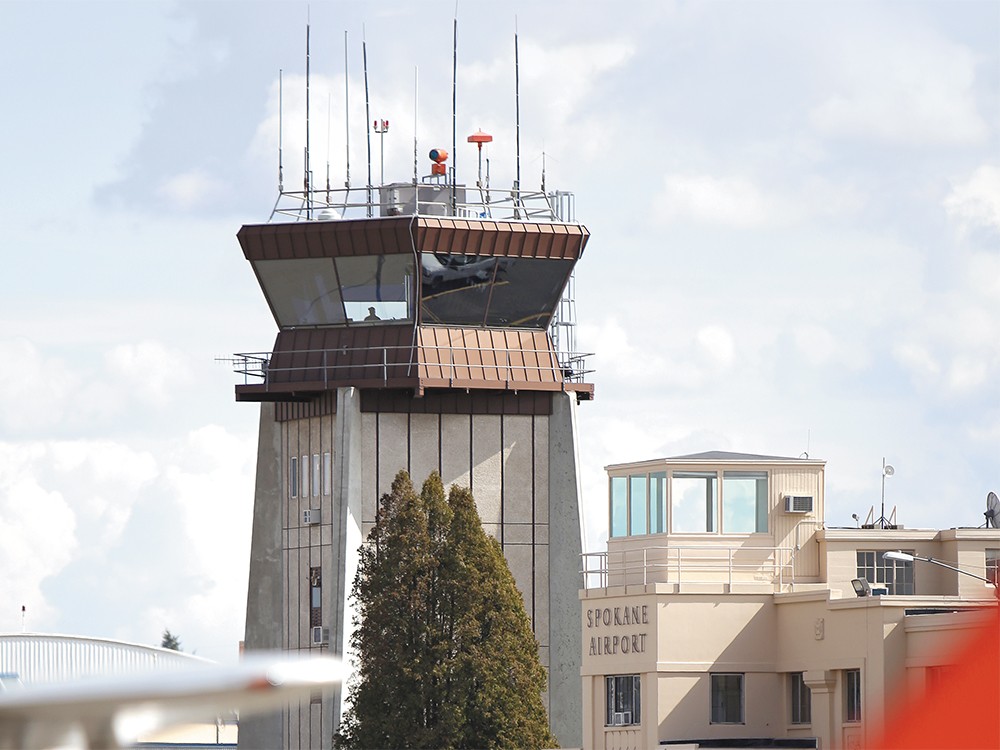Every day just northeast of downtown Spokane, dozens of engines rumble to life and roll down the asphalt and grass runways of the nearly century-old Felts Field.
Among hobbyists’ Cessnas are first-time fliers getting lessons, air ambulances rushing to emergency scenes and border protection agents. Pilots look out at the runway ahead, but count on another set of eyes to help them navigate the air above them.
Inside a control tower that looms over patched asphalt runways, control operators have radar technology that gives them a comprehensive view of the airspace around the field — a luxury most pilots of small planes don’t have.
Earlier this month, Felts Field made a list of places where the Federal Aviation Administration plans to close control towers like this one, ending that type of assistance for pilots. The FAA operates the towers on contracts and announced it will close 149 of them to save money in the wake of federal budget cuts known as sequestration.
Since the announcement, officials at Felts have been fighting back, equating the control tower to “a pair of glasses” for pilots and asking the FAA to reconsider. When that failed and the FAA gave Felts a May 5 tower closure date, Spokane Airports filed a petition for review with a U.S. Court of Appeals in Washington, D.C. Since then, four other airports have filed similar cases, asking courts to review the FAA’s decision to close the fields. If they’re successful, the closures could be put on hold.
The tower closure is just that — it won’t shut down the whole field — but officials worry it will compromise safety. While commercial airlines have radar technology to detect where other planes are, most small aircraft like those that use Felts Field don’t. So without control towers, pilots are left to determine through communication with other planes where it’s safe to fly. It’s possible, but not ideal. Spokane is a complex airspace, officials say, where flights in and out of Felts, Coeur d’Alene’s Pappy Boyington Field, Spokane International and Fairchild Air Force Base all crisscross. Felts alone is home to about 52,000 takeoffs and landings each year.
At Spokane International Airport, commercial flights run on time because smaller aircraft are operating at Felts instead of in the midst of bigger planes, says Spokane Airports CEO Larry Krauter. He’s a cautious, gray-haired man who repeatedly emphasizes how out of character the decision is for the usually thoughtful FAA, and wonders if the national speculation is true — that these cuts are one of the Obama administration’s ways of stirring up anger over the sequester.
Krauter likens the cuts to removing street lights at intersections to save money and being surprised when accidents happen.
“It is a system, and I think that’s what people need to remember,” he says. “There is an interrelatedness of decisions. If you make a change somewhere, there’s an impact on the system. I can tell you the FAA is, as of this day, unaware or completely uncertain as to what that impact might look like.”
Felts, then known as the Parkwater airstrip, opened to air traffic 100 years ago, and operations there first picked up with the arrival of the National Guard and airmail in the 1920s. In 1929, a pair of pilots set records when they stayed in the air for 120 hours in their “Spokane Sun-God” on a flight from Felts Field to New York and back, refueling 8,000 feet in the air. Felts remained Spokane’s primary airport until traffic picked up so much in the years leading up to World War II that Spokane International was built.
“This is where aviation was born in this area,” Krauter says.
Today, Felts, which is owned by the city and county and operated by the Spokane Airport Board, remains one of the nation’s oldest airfields still in operation and is at the heart of a plan to revitalize the neighborhoods around it. Advocates are fundraising for a 23,000-square-foot military and aerospace museum they hope will attract tourists and new businesses.
“Certainly we can do those things with or without a tower, but having a tower is something we think enriches the opportunity to really do well here,” Krauter says. “[Felts’] history is its future.”
Addison Pemberton, a commercial pilot, has been flying out of Felts since the mid-1990s and owns an aerospace instrument company in Liberty Lake. He is worried about the cuts too. In a national disaster, Felts could provide crucial support for the National Guard, he says. As the base of Northwest MedStar, it could be the starting point of a life-saving mission. An accident, on the other hand, could ruin its reputation.
“If we end up with a horrific accident right over Millwood, that could compromise public opinion of the airport, which would be a travesty,” Pemberton says.
Krauter is careful to say he and others aren’t “fearmongering.” They have a “respectful dread” of the tower closure contributing to accidents or economic decline, he says, but the concern is measured.
Dennis Elrod, CEO of Spokane Turbine Center, which works with groups like the Moody Bible Institute to train missionaries to fly, says he worries the closure of the tower could contribute to accidents or a pilot shortage. But it won’t end Felts.
“Those who are current pilots are resilient,” Elrod says. “They’re going to fly. They’re going to figure out a way.”
Even Northwest MedStar isn’t panicked. The air ambulance service averages 1,200 takeoffs and landings at Felts each year and frequently has been cited as one of the biggest losers if the tower closes. But many of the airfields their pilots use in remote locations in Idaho, Washington and Oregon don’t have control towers.
“More don’t than do,” says director Eveline Bisson.
Even at Felts, the tower is closed overnight, when emergencies often happen. Bisson says she’s talked with the company’s pilots, and they don’t expect major changes.
“We always would prefer to have the tower,” she says, but “for us it’s normal business [to not have access to a control tower]. We’re prepared.”




















